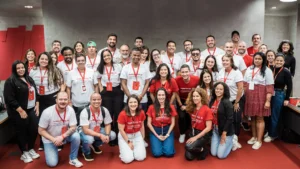Use no more, no less. To use better. This is the main objective of sustainable development, which suggests prioritizing quality in the use of natural resources, in order to safeguard them for current and future generations.
The term seeks to align environmental preservation with the socioeconomic and political interests of countries. This objective demands individual and collective efforts.
Therefore, see below the concept, importance and relationship of sustainable development with other terms arising from UN international conferences.
What is sustainable development?
The definition is collective planning to meet the needs of the current generation, without compromising future generations. This definition dates back to the mid-1970s, in the first UN meetings.
the term sustainability was first defined in the 1987 World Commission on the Environment and was consolidated in the Rio 92. From this, other terms in the same wake as sustainable economy came to the debate.
Therefore, the concepts do not have exactly the same meaning and we will explain their peculiarities shortly.
Therefore, the important thing is to highlight that studies on sustainable development were born from conferences at a global level.
Finally, to be achieved, new consumption patterns must be established. This does not necessarily mean stopping economic development or reducing it, but seeking to combine commitments and environmental responsibility in daily actions.
Sustainable development: how important is it?
The importance of sustainable development is to ensure better management of nature's resources so that they are not depleted. However, inconsequential use can lead to irreversible climatic phenomena and affect the quality of life of populations.
Reducing impacts on the environment can go hand in hand with socioeconomic progress. The concept is important because it encompasses the main interests of the common good, such as the health of ecosystems and economic development.
The issue has gained prominence in recent years, especially among leaders of large companies, according to Forrester study, but it is not that recent. Since the middle of the 20th century, the effects of human action have already caused concern regarding the maintenance of current models.
Sustainable development: examples
The actions are all those that will promote awareness about the balanced use of resources.
Therefore, to preserve the environment and create more sustainable cities, its practice depends on multilateral gestures. They come from civil society, companies and state representatives.
For think about the future in the present, sustainable actions can result from small, everyday actions or large-scale movements.
Below we will list some examples of sustainable development practices:
- Proper disposal of waste, considering organic and non-organic waste;
- Reduction of plastic consumption, when possible, or recycling if waste generation is necessary;
- Adopt the conscious consumption, avoiding food and water waste;
- Reduction in the use of means of transport powered by polluting fuels, seeking workarounds;
- Use of renewable energies.
What are the pillars of sustainable development?
The pillars of sustainable development are the same as those defined for sustainability during the UN World Summit in 2010. There are three pillars that serve as the basis of progress for sustainable companies in their routine actions.
In this way, sustainable development is based on the following pillars: environmental, economic and social. The main objective of this tripod is to remove unilateral thinking and promote actions always concerned with meeting the demands of each pillar, namely:
- Environmental sustainable development: rational use of environmental resources with a focus on preservation.
- Economic sustainable development: all actions taken in the financial and technological sphere.
- Social sustainable development: think about social well-being and the reduction of inequalities, without failing to take responsibility for human rights.
What is the UN 2030 agenda for sustainable development?
In 2015, the United Nations created the Agenda 2030. This agenda is based on the Universal Declaration of Human Rights, international Human Rights treaties, the Millennium Declaration and the results of the 2005 World Summit.
It is a joint action plan, originating the so-called SDGs, the Sustainable Development Goals. A list of 17 items was then created to be fulfilled by member countries by 2030.
Among the goals found on this list are the combat to hunger, social and gender inequality, encouraging quality education and environmental preservation.
Among the 17 objectives, there are 169 measurable goals. To simplify, let's list the SDGs:
- Eradication of poverty
- Zero hunger and sustainable agriculture
- Health and wellness
- quality education
- Gender equality
- Clean water and sanitation
- Clean and affordable energy
- Decent work and economic growth
- Industry, innovation and infrastructure
- Reducing inequalities
- Sustainable cities and communities
- Responsible consumption and production
- Action against global climate change
- Life in the water
- Earth life
- Peace, justice and effective institutions
- Partnerships and means of implementation
What is Brazil's contribution to sustainable development?
Brazil's main contribution to sustainable development was hosting two international conferences on sustainability. Both considered among the most notable in history, Rio 92 and Rio+20 they were milestones among nations.
Rio 92 is a protagonist in our topic under debate and consolidated the concept of sustainable development. She even brought a new definition, such as “the simultaneous and balanced promotion of environmental protection, social inclusion and economic development”.
At this conference, the country played an important role, approving documents such as Agenda 21, the Rio Declaration on the Environment and the Declaration of Principles on Forests. At Rio+20, the objective was to renew political commitments to sustainable development.
The three pillars, which we mentioned previously, were consolidated at Rio+20. After that, Brazil also participated in the 2015 United Nations Summit on Sustainable Development. At this summit, negotiations culminated in the origin of the SDGs.
What is the relationship between sustainable development and sustainability?
According to the definitions brought here, sustainable development and sustainability go hand in hand. Studies of both concepts have been conducted since the 1970s and are being reaffirmed at global summits.
A UNESCO created a differentiation for the terms. According to the organization: “while sustainability is like a long-term goal, it refers to the processes and paths to achieve it.”
That is, while sustainability covers issues related to the preservation of ecosystems, sustainable development focuses on participatory planning. This proposes a new economic order, whose social development is also thinking about future generations.
What is the role of society in sustainable development?
Sustainable development is a collective goal. Complying with UN agendas and leading a “sustainable lifestyle” depends on everyone, following rules and action policies.
Each individual is responsible for evaluating how they are acting in their daily lives and checking what can change, in order to contribute towards a more harmonious life with the environment. Still, public policies are what define the main plans to guarantee this development model.
However, the role of companies cannot be forgotten. They are protagonists when it comes to the development of society. The responsibility of companies is to establish, at all stages of the production chain, standards and actions that reduce environmental impacts.
What is the role of companies in sustainable development?
Second study by Forrester consultancy in partnership with Johnson Controls, at least 70% of organizations currently have sustainable development as their main agenda. Investments are seen in the area as a competitive advantage in the market.
The actions reflect on the brand's reputation, the ease of acquiring talent and customer loyalty. To achieve this, the role of companies is to make commitments, with plans and actions, with the ESG agenda.
iFood constantly reinforces its vision and announced, in March this year, that it will redirect resources to meet environmental goals by 2025.
A Foodtech will allocate combined amounts of R$15 million to a round of ESG-focused investments.
Furthermore, iFood took stock of its commitments to sustainable development. The conclusion was that more than 35 million deliveries were made by non-polluting modes.


